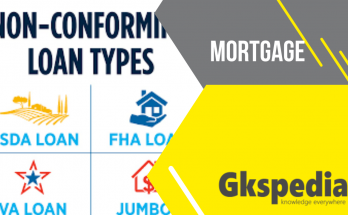Introduction: When it comes to financing your dream home, understanding your options is key. If you currently have a VA loan but are considering the switch to a conventional mortgage, you’re in the right place. Making the move from a VA loan to a conventional mortgage can offer financial advantages and flexibility that suit your evolving homeownership needs. In this guide, we’ll delve into the intricacies of transitioning from a VA loan to a conventional mortgage, exploring the benefits, considerations, and steps involved in this important decision. Join us on this journey to discover how you can make the most informed choice and secure the home you’ve always envisioned.
VA loans are military and veteran mortgages that can be used to buy, build, or refinance a home. It is used by the United States. Veterans Affairs (VA) means that the VA will insure the loan on behalf of the mortgage lender if the borrower stops paying.
Benefits of VA loans include no down payment and no mortgage insurance requirements. VA loans typically have lower interest rates and relaxed credit standards.
A VA loan borrower pays a loan fee, but his one-time fee between 1.4% and 3.6% of the loan amount. The home should be your primary residence (i.e. you plan to live there), not a secondary home or investment property.
VA loans are available from VA-licensed mortgage lenders. There are also national lenders and some credit unions that specialize in this type of loan.
Conventional loans: Overview
A traditional loan is the most popular type of mortgage. Unlike VA loans, they are not backed by the government. Available from different types of mortgage lenders, including banks and online lenders.
If you qualify, you can get traditional loans with as little as a 3% down payment. However, if your deposit amount is less than 20%, you will have to pay for Personal Mortgage Insurance (PMI) for some time. Most of the time, you pay your insurance premium with your monthly mortgage payment.
Unlike VA loans, traditional loans have a minimum credit requirement of 620, but need 740 or higher to get the best interest rates and terms.
If you have a VA loan on your current home, you can refinance it with a traditional loan, but that may only make sense in very specific circumstances. Traditional loans usually have higher interest rates, and you pay more than a monthly personal home loan. You don’t want to refinance your VA loan just to save money on your mortgage payment because you will be charged a loan insurance premium (PMI).
When a VA to Conventional Loan Refinance Makes Financial Sense
The most common reason for refinancing from a VA to a traditional loan is that the borrower wants to purchase a rental home using the VA loan. This allows you to increase your monthly income. Usually, if he is a VA-eligible borrower, he only has one loan that he can use to get a VA mortgage. This credit can be used any number of times, but not more than once at a time. Freeing up VA balances may allow homeowners to buy another home and gain more financial freedom, but there’s a big catch.
Reasons to Refinance from VA Loan to Conventional
If a traditional mortgage requires A) a down payment, B) a higher credit score, and C) a PMI, why would a veteran want to refinance from a VA loan to a traditional loan? There are several reasons:
Repurposing rental homes: If his primary residence is funded by a VA loan, he generally cannot use a separate VA loan to purchase his second property (although there are exceptions). However, many veterans choose to move out of their home, convert it to a rental property, and use a VA loan to purchase their new primary residence. Converting your first home VA loan to a traditional his VA loan gives you the opportunity to use your VA loan eligibility to buy a new home. End State: Your old house becomes a rental property with a conventional loan and you buy a new house with a VA loan.
Better Terms: VA loans usually offer very competitive interest rates. However, if you have enough credit to qualify for a traditional loan, you may be able to refinance on better terms than a VA loan.
Not Covered by IRRRL: VA’s Interest Rate Reduction Refinancing Loan (IRRRL) provides veterans with VA loans a streamlined opportunity to refinance at a lower interest rate. However, some veterans with multiple mortgages may not qualify for this program. For these individuals, refinancing to traditional loans may be the only option to take advantage of lower interest rates. Note: With traditional loans, borrowers must pay a PMI if their home equity is less than 20%, which can add up to $1,000 or more in payments each year. For example, if an appraiser values your home at $200,000, your 20% equity is $40,000 ($200,000 value x 20%). That is, if the outstanding VA loan on that property is less than his $160,000 ($200,000 minus his $40,000), he is 20% more equity capitalized, and for a traditional refinance he is PMI you don’t have to pay Bottom line: For veterans looking to refinance, make sure you have at least 20% equity in your home if you want to avoid paying his PMI on a traditional loan.
How to Use a VA Loan for Rental Property
There is a big problem when using a VA loan to purchase a rental or investment property. Still, homeowners can refinance their current home’s VA loan with a conventional loan, release the VA loan, rent that home to generate income, and then use the VA loan as their primary residence to buy a new home. You can buy one, which requires you to give up your current home life. This may or may not be acceptable (depending on how much you like it), but it can be a smart financial solution for many. Also, be aware that the PMI premium (mentioned above) makes your first home (now a rental home) a higher mortgage, which can easily eat into your profits.
Please note that VA loans are available for homes with a maximum of 4 units. So if you’re serious about increasing your rental income, choosing an affordable duplex or triplex apartment as your new primary residence makes sense. Alternatively, if you want to skip the entire refinancing process, it may be wiser to sell your old home to free up your VA balance and use your new VA loan to purchase your multiplex.
A common reason to refinance a VA loan to a traditional loan is to purchase a rental property. The VA loan cannot be used to purchase his second property for any purpose. You can convert your existing VA loan to a traditional loan and use the property for rent. You can then use your veteran status to purchase a new permanent home.
VA loans offer the opportunity to buy a home with no down payment, so you can add personal mortgage insurance to your monthly mortgage payments by refinancing to a traditional loan.
A traditional qualifying loan typically requires you to pay 20% of the home purchase price (at least 20% equity in the home) to be exempt from paying PMI. If the value of your home has increased significantly while living there, chances are that the home is at least 20% equity.
How to Refinance Your VA Loan to Conventional
After reviewing the over, if refinancing from your current VA loan to a conventional loan makes sense, then are the way to do it
Step 0 – Confirm your equity( voluntary, but recommended) While you don’t need to have 20 percent equity in your home to refinance into a conventional loan, you’ll have to pay PMI if you do not. You’ll need to factor these fresh payments into your yearly budget. To save plutocrat in this step, you can use a home value estimator like Zillow for a rough value. But, you’ll still need to pay for a formal appraisal during the refinance loan ending process.
Step 1 – confirm your credit score To qualify for the stylish loan terms, you’ll want a credit score over 740. still, some lenders will allow you to refinance into a conventional loan with a 620 or higher. However, chances are you won’t qualify for any conventional refinance programs If you have a lower score than this.
Step 2 – Confirm your debt-to-income rate( DTI) Lenders use the debt-to-income rate as a measure of a borrower’s capability to repay debt. To calculate it, add up all your yearly debt payments(e.g. auto loans, credit card payments, pupil debt, and your unborn mortgage payment) and divide them by your gross yearly income. utmost lenders will want to see a DTI below 40 percent, though some will allow as high as 50 percent.
Step 3 – compare options Once you’ve verified your fiscal health in the below way, you’ll want to actually compare conventional refinance quotations from different lenders. These comparisons will help you decide which conventional refinance makes the utmost sense for your situation. At a minimum, you should compare 1) APR( the effective interest you’ll pay on a loan, including freights); 2) ending costs; and 3) loan terms(e.g. 15-, 20-, 25-, vs. 30- time loans).
Step 4 – Apply and close on the loan After opting for the stylish conventional refinance option, you’ll need to apply for the refinance loan. This will include submitting all of your fiscal information, completing a formal home value appraisal, and submitting any fresh information the lender requires. The ending process will be basically the same as a home purchase ending, except there won’t be a dealer involved. You’ll subscribe to the ending documents with either an agreement agent or a real estate attorney.
Step 5 – apply for the VA one-time restoration of the annuity( voluntary) If you refinanced your VA loan to a conventional bone
in order to use the VA loan at an alternate time, you’ll need to file paperwork with the VA. Specifically, you’ll need to request the one-time restoration of annuity by filling out a Request for a Certificate of Eligibility, VA Form 26 1880, and transferring it to the VA indigenous loan center for your state.
Differences Between VA and Conventional Loans
| Comparison Factor | VA Loans | Conventional Loans |
| Down Payment | $0 | 3% – 20% |
| Private Mortgage Insurance (PMI) | No PMI | PMI for mortgages with less than 20% down |
| Rates | Typically lower than conventional | Typically higher than VA |
| Credit Score | Not set by the VA, but lenders often require at least a 620 FICO | Typically a 620 FICO minimum |
| Property Type | Primary residence | Primary, secondary, investment property and vacation homes |
| Program Fees | VA Funding Fee (1.4% – 3.6% of the loan amount) | No program fees |
| Special Borrower Requirements | Borrower must be a Veteran, service member or spouse with a valid COE | No special requirements |
Which is right for you?
If you qualify for both VA and traditional loans, compare mortgage offers first. Interest rates on VA loans can be more attractive than traditional loan rates, but this depends on the mortgage lender you partner with and other factors. If you can get a low interest rate on a VA loan, it might be worth it, especially now that interest rates are rising.
However, if your credit needs improvement, a VA loan is more flexible than a traditional loan. (However, the most flexible loan from a credit standpoint is the FHA loan. This is how VA and traditional loans compare to his FHA loan.)
Interest and credit aside, if you can afford to pay the 20%, you may be better off opting for a traditional loan to avoid VA loan fees. Unlike a no down payment VA loan, getting a traditional 20 percent (or whatever amount) loan quickly puts you in some home equity as well.
Please also note that you cannot purchase a vacation home or investment property with a VA loan. If that is your goal, you should look for a conventional or investment mortgage.




